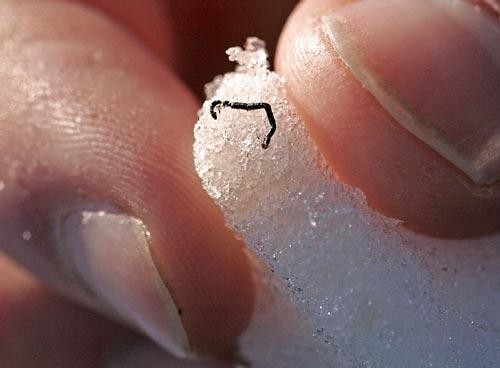Glacial Ice Worms: Ancient Story Tellers

By Gavin Willis, graduate student in the institute’s 14th cohort.
So much of natural history is about storytelling. Whether it is telling about the budding of Indian Plum last spring, the migration pattern of Spotted Towhees last decade, or the historical path of a river, the idea of imparting to present and future generations the story of what was once observed is integral to the ideals of natural history. However, the stories aren’t always complete, and the quest to fill those gaps can unearth all kinds of interesting science and research methods.
The first thing that strikes most visitors to the North Cascades is the rugged mountainscapes that surround them. The story of the glaciers that carved those mountains is older than the park itself, by millennia. The most recent story is that of the Puget Lobe of the Cordilleran Ice Sheet, which is said to have advanced south from the Waddington Range and engulfed the entirety of the North Cascades. Geological evidence tells the story of its retreat approximately 12,000 years ago, but attempts to determine the path it took while fleeing the area have unearthed as many questions as answers.
There are many different voices that tell the story of the retreat of the Cordilleran Ice Sheet. Jagged mountain peaks tell tales of the ice sheets’ height, while scarred bedrock told legends of its mighty power. However since I’m a biologist, and not a geologist, I can’t translate any of these stories. Instead, I chose to listen to the voice of the ice worm.
Ice worms are interesting creatures. They live on the ice surface of glaciers along the Western coast of North America, from Northern Oregon up to Alaska. They are an important species, making up a large portion of invertebrate biomass on glacial ecosystems and acting as a food source for a few species of subalpine birds. Their speciation also tells us something about how they got to where they are: the fact that the Alaskan population of glacier ice worms is a different subspecies than those found in British Columbia and Washington suggests that they originally moved their range southward during periods of intense glaciation. When the Cordilleran Ice Sheet retreated, populations of ice worms were left stranded on icy mountain tops, where they can still be found today.
The fact that, until the end of the Fraser Glaciation (the last period of time when the Cordilleran Ice Sheet was present), the glacial ice worms in the North Cascades comprised a single large population presents us with a unique opportunity to use their phylogeny to tell the story of the retreat of the ice sheet. If we assume that the “junk DNA” (DNA that doesn’t have a specific purpose) gains mutations at a constant rate, then we can compare the differences between populations in order to determine the relative time frame when those populations were separated. Since the populations wouldn’t have been separated until there was no longer any ice between them, we can use those relative time frames to map the retreat of the Cordilleran Ice Sheet.

Animation showing the retreat of glaciers and the locations of glacier ice worms.
With this idea in mind, I started searching for data and found a phylogenetic tree of glacier ice worms from a PhD thesis. I was able to manipulate and simplify that tree to eight main populations, and map out a location for each of those populations. From there, it was fairly straightforward to determine which populations were linked most recently, and I was able to draw up a series of images showing how the ice sheet might have retreated.
So is the story now completely told? Far from it! There are still countless mysteries to be unlocked in the geologic history of the North Cascades, an area that changes so rapidly, with fast-moving rivers, volcanic activity, and even the occasional earthquake. All of these factors serve to obscure the story of the formation of the North Cascades into the range that we know today.
Hopefully this unveiling of this part of the story has inspired you to go out and uncover a story of your own. Develop a close relationship with your local ecosystems and you might be surprised at how many good stories you can hear, simply by listening to all of the voices in the environment around you!
This is a portion of Gavin’s Natural History Project as a graduate student at the North Cascades Institute. All of the previous natural history projects can also be found on Chattermarks.

